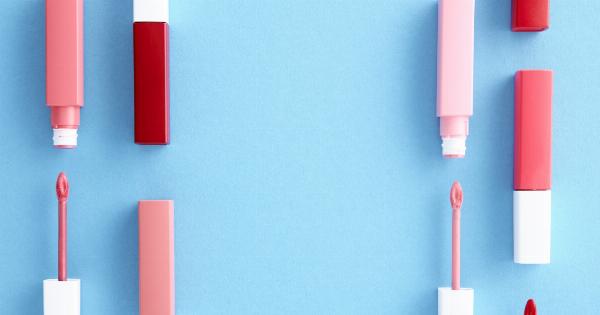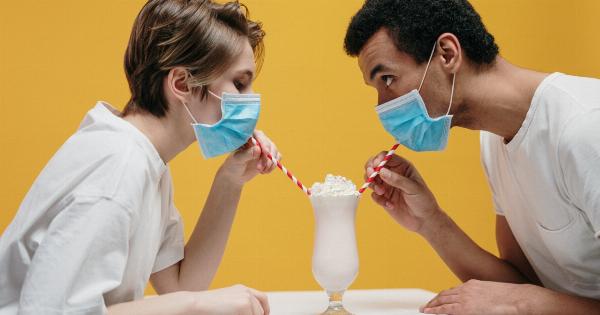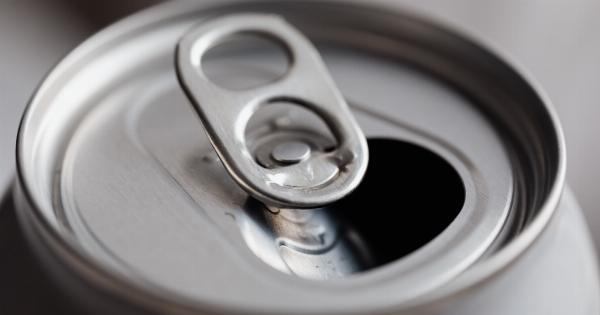For many women, lipstick is an essential part of their daily beauty routine. From enhancing their natural features to making a bold statement, lipstick has the power to transform one’s appearance.
However, not all lipsticks are created equal, and some can pose significant health risks. In recent years, concerns have been raised about the use of fat lipsticks and their potential impact on our well-being. In this article, we explore the three major health concerns linked to fat lipstick usage.
1. Lead Contamination
A shocking revelation that came to light a few years ago was the presence of lead in many lipsticks, particularly those high in fat content.
Lead is a toxic substance that can have serious health implications, especially when ingested or absorbed through the skin. Studies have shown that long-term exposure to lead can lead to various health problems including damage to the nervous system, kidney dysfunction, reproductive issues, and even an increased risk of cancer.
One of the main sources of lead contamination in lipsticks is the pigments used to create vibrant colors. Some of these pigments may contain trace amounts of lead as an impurity.
As fat lipsticks contain a higher amount of pigments to achieve the desired intensity, the likelihood of lead contamination also increases.
2. Allergic Reactions
While cosmetic allergies are relatively common, fat lipsticks have been shown to have higher rates of causing adverse reactions compared to regular lipsticks.
These reactions can range from mild irritation, chapped lips, and dryness to more severe symptoms such as swelling, redness, and blistering.
The fat content in lipsticks can attract and trap allergens, such as pollen or dust, resulting in a higher risk of an allergic reaction.
Additionally, some fat lipsticks may contain certain ingredients that are known allergens, further exacerbating the likelihood of an adverse reaction.
3. Microbial Contamination
Another concern related to fat lipstick usage is the potential for microbial contamination. Microorganisms, including bacteria, fungi, and viruses, can thrive in the moist environment of fat lipsticks, posing a risk of infection.
This is especially true when lipsticks are shared or used past their expiration date.
Research has shown that various harmful bacteria, such as Staphylococcus aureus and Escherichia coli, can be present on lipsticks.
These bacteria can cause skin infections, cold sores, or even more severe illnesses, particularly in individuals with compromised immune systems.
Taking Precautions
While the health concerns associated with fat lipstick usage may be alarming, there are precautions one can take to minimize the risks:.
1. Be Mindful of Ingredients
Read the ingredient labels of lipsticks carefully, and avoid those known to contain potentially harmful substances like lead or allergens. Look for lipsticks with natural ingredients or those that have been tested for safety.
2. Practice Good Hygiene
Always use clean hands and ensure that lipsticks are not shared with others. Additionally, regularly disinfect lipstick containers and consider using disposable applicators.
3. Check Expiration Dates
Just like any other cosmetic product, lipsticks have a shelf life. Using lipsticks past their expiration date increases the risk of microbial contamination. Replace lipsticks according to their recommended expiration dates.
4. Opt for Regular Lipsticks
Consider using regular lipsticks instead of fat lipsticks, as they generally have a lower risk of lead contamination and allergic reactions. Regular lipsticks also tend to have a drier formula, making them less conducive to microbial growth.
Conclusion
While fat lipsticks may provide vibrant colors and a smooth application, they also come with potential health risks.
It is essential to be aware of the dangers associated with their usage, particularly lead contamination, allergic reactions, and microbial contamination. By prioritizing ingredient safety, practicing good hygiene, and checking expiration dates, individuals can enjoy the benefits of lipstick while minimizing the risks to their health.






























